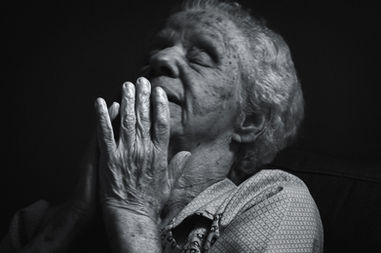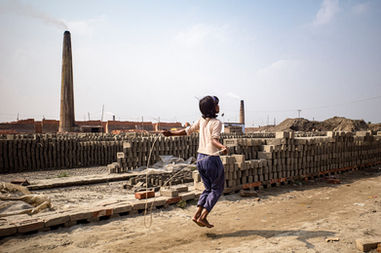
FLOATING GARBAGE
Emy Maike returned to the Philippines to confront a growing crisis: plastic pollution. Her work explores how this environmental threat has become embedded in everyday life, revealing its impact on both communities and the landscape they call home.
August 26, 2022
PICTORIAL STORY
photography EMY MAIKE
story EMY MAIKE & MELANIE MEGGS
Floating garbage. Where does it come from?
For centuries, our planet has been polluted and marred by human activity. But in recent times, we have become more aware of the devastating effects that plastic pollution can have on our environment. And while it may seem like a distant problem, we are now seeing the effects of plastic pollution everywhere. From the Great Pacific Garbage Patch to our own backyards, plastic pollution is a serious issue that needs to be addressed.
The Great Pacific Garbage Patch is a massive collection of marine debris in the North Pacific Ocean. Not only is it full of plastic waste, but it is also full of larger pieces of plastic that has been broken down into smaller pieces known as microplastics. This soup of microplastics has been a problem for some time and it's steadily increasing. It's estimated that our oceans are now 90% full of plastics.
What's worse, plastic is non-biodegradable, meaning it does not degrade or decompose. This means that over time, more and more plastic waste accumulates in our oceans and landfills. The majority of this plastic waste can be traced back to land-based activities in North America and Asia, while ships navigating the oceans also dump large amounts of plastic into the water.
The issue of plastic pollution is a global one and it's time for us to take action. If we don't make a change soon, the consequences for our environment could be dire. So, let's learn more about plastic pollution and its effects on our planet.
-min.jpg)
In a world where more than 8 million metric tons of plastic are discarded into oceans every year, Indonesia is among the top contributors to plastic pollution. Scientists have predicted there will be more plastic than fish in the oceans by the year 2050. Proper management of plastic waste is lacking in coastal communities in Indonesia. Researchers from Indonesia and Australia found that waste management and infrastructure capacity in coastal communities in Indonesia did not effectively prevent plastic debris from entering the marine ecosystem. This plastic waste in the ocean negatively affects the marine ecosystem as sea creatures like whales, turtles and fish mistake floating plastic waste for food, swallowing material they can’t digest. The plastic accumulates in their bodies over their lifetime, killing them or working their way up the food chain and eventually circling back to humans.
I travelled to the Philippines in 2019. For more than a year I sat at my computer and researched information and also bought books about the world's pollution and how the people manage their living life within it. It is a subject that seems to be overlooked. It actually wasn't my intention for me to deal with this information, but there was a change within myself, so I dared myself to do this documentary project.
As I travelled around places such as Davao, Mindanao and Navotas City, Manila, there were many surprising moments. The pictures speak more than words and you can try to understand how they live. A few local women were watching me and were curious to what I was photographing. I spoke to them. Josie from Davao City, Mindanao, described what it was like living there. “I am living in this area for so many years that there is now a lot of garbage under the house. Back when my children were little, they fell down but they are still alive and grown up."
At the other side of the beauty at the remote place just a few steps into eternity there is an abandoned place the Cemetery and this place is the garbage dump of humanity.
Uncollected waste contributes more to plastic waste discharges than leakages from final disposal sites, and very little plastic is recycled. Rural areas generate the largest amounts of mismanaged plastic waste due to very limited waste collection rates. Limited collection services and access to disposal infrastructure hinders improvement in waste handling behaviors. Direct disposal in water is the main pathway of plastic waste reaching rivers then dispersing into the ocean, often resulting from populations not having access to waste collection services. The inhabitants have no other way to dispose of their garbage. For the people living in this kind of area, this is how they live their life and they are happy, just the way they are, unknowingly having an impact on the world.
However, they might live the life in this kind of situation there are always smiling faces. You must reach out and you are going to smile too as they do!
In regions where proper waste management systems are not in place, the most effective way to help bring plastic waste levels down is to encourage people to reduce, reuse and recycle. Governments must also take steps to ban single-use plastics and invest in waste management infrastructure in order to prevent plastic from entering the ocean. Fortunately, some of these steps are already being taken in Indonesia. For example, the island of Bali has banned all single-use plastics, while Jakarta has banned plastic bags in shopping centres and street markets. This is an important step forward, but more must be done to ensure that plastic waste is properly managed and does not end up in our oceans.
In addition to government initiatives, individuals can also play an important role in reducing plastic waste. People can choose to purchase less single-use plastic items and opt for reusable items such as metal straws and water bottles. Another way to help reduce plastic waste in the environment is by properly disposing of discarded items instead of leaving them to end up in the ocean.
By taking these steps, we can help reduce plastic pollution in our oceans and create a cleaner, healthier environment for not just us, but for future generations as well. Proper management of waste can have a positive effect on both the local and global environment, and it is up to us to make the changes necessary to ensure that our planet is able to thrive.

Emy Maike’s photography is more than documentation — it is a deeply personal act of witnessing. Born and raised in Manila and now living between Germany and Switzerland, Emy brings a unique perspective to her work, shaped by both distance and deep connection.
In capturing the realities of plastic pollution in the Philippines, Emy doesn’t just show the problem, she reveals the humanity within it. Her images honor the dignity of communities living among waste, not as victims, but as people navigating difficult circumstances with resilience and grace. Emy Maike's work is a call to attention, and a call to care — a visual testimony that challenges us all to do better.

The views, thoughts, and opinions expressed in the text belong solely to the author, and are not necessarily shared by The Pictorial List and the team.


































